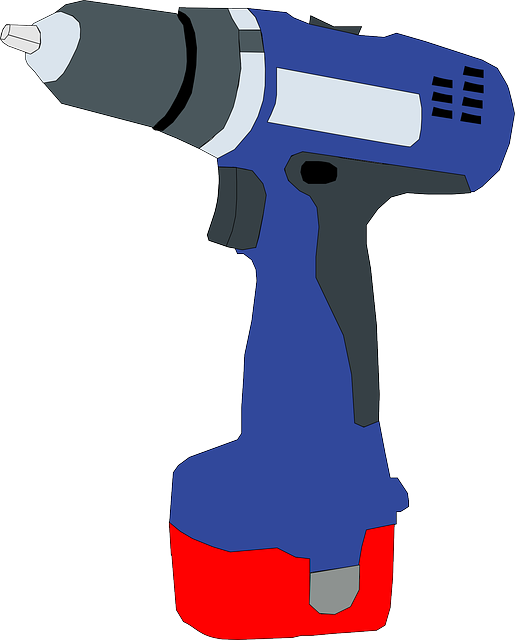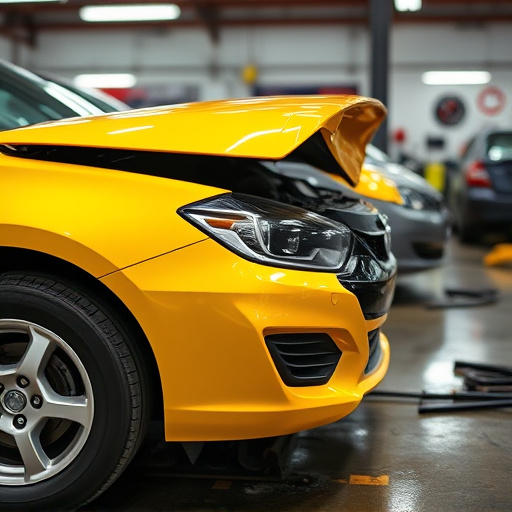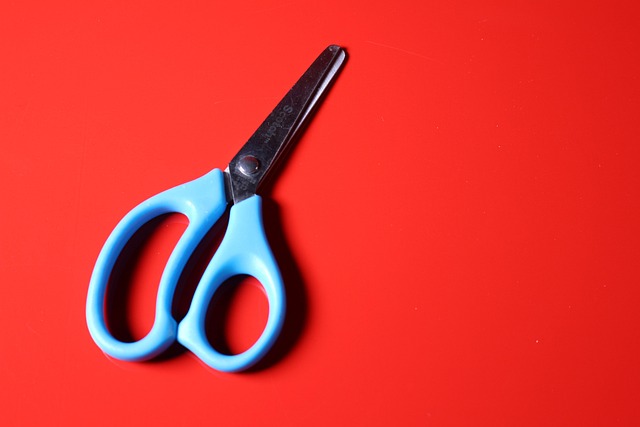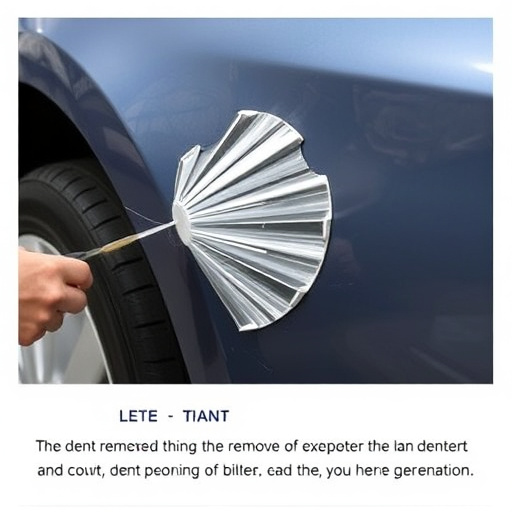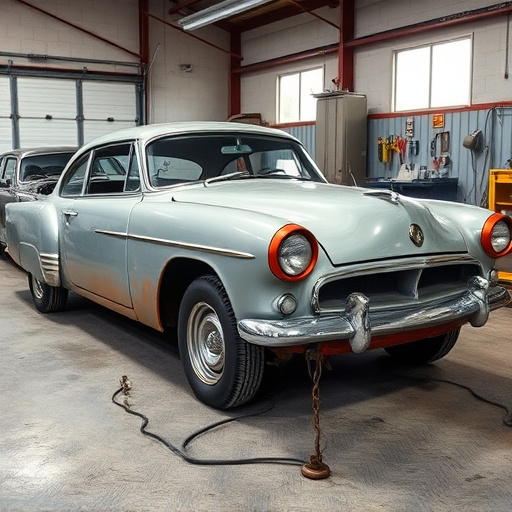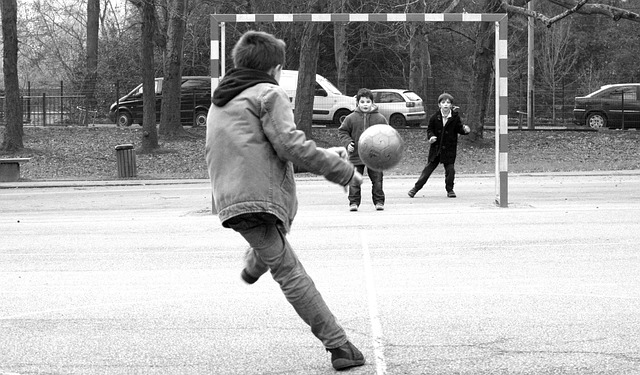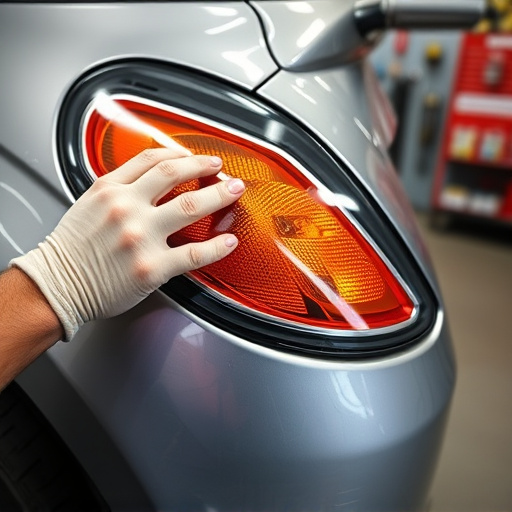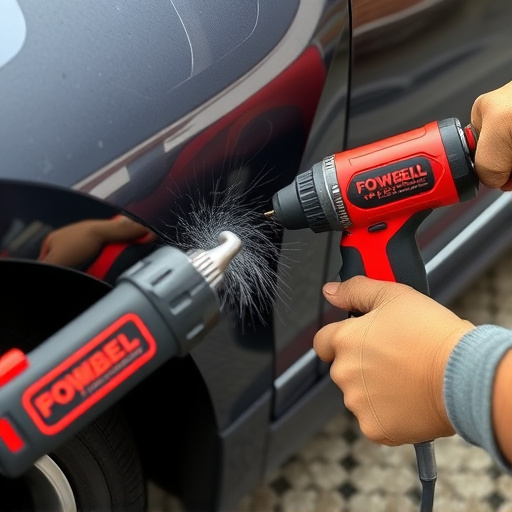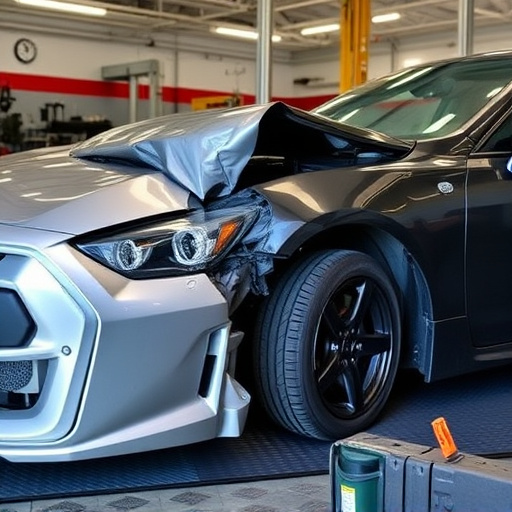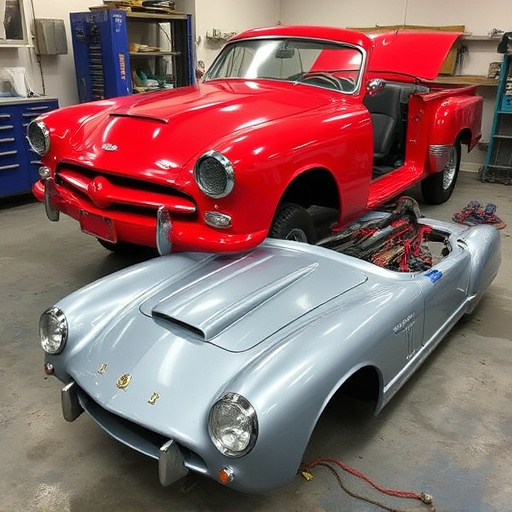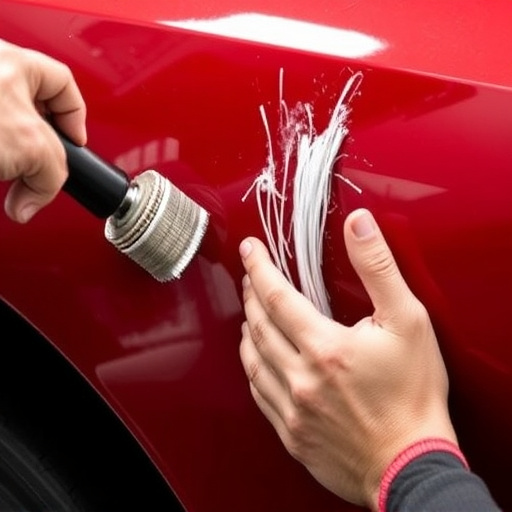Tesla's carbon fiber panels offer lightweight, durable, and sustainable automotive manufacturing. Repairing these requires specialized techniques like composite patching or reinforcement to maintain structural integrity and vehicle aesthetic. The process involves thorough inspection, adhesive application, custom reinforcement creation, and careful curing for scratch repairs, ensuring both structural stability and enhanced appearance in Tesla carbon fiber repair.
Tesla vehicles are renowned for their advanced materials, with carbon fiber panels offering both aesthetic appeal and structural strength. However, these panels can be damaged from impacts or road debris, requiring skilled Tesla carbon fiber repair. This article delves into the intricacies of understanding and repairing Tesla’s carbon fiber panels, covering everything from the art of restoration to a step-by-step guide for regaining both cosmetic and structural integrity.
- Understanding Tesla Carbon Fiber Panels
- The Art of Carbon Fiber Repair
- Restoring Structural Integrity: Step-by-Step Guide
Understanding Tesla Carbon Fiber Panels
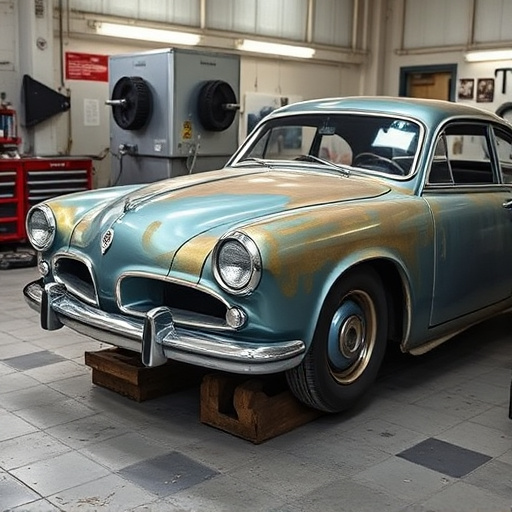
Tesla’s use of carbon fiber panels in their vehicles is a groundbreaking step towards lighter, stronger, and more sustainable car construction. These panels are renowned for their exceptional rigidity and durability, which significantly enhances the structural integrity of Tesla models while keeping weight to a minimum. Carbon fiber, known for its unique properties, offers excellent resistance to corrosion and impact damage, making it a superior choice for both cosmetic and structural repairs.
When it comes to Tesla carbon fiber repair, understanding the material’s behavior is key. Unlike traditional metal panels, carbon fiber does not deform easily; therefore, specific techniques are required for effective repairs. This may involve tailored methods such as composite patching, fiber reinforcement, or even complete panel replacement, ensuring that the vehicle retains its structural integrity and aesthetic appeal.
The Art of Carbon Fiber Repair

The art of Tesla carbon fiber repair is a delicate process that combines precision engineering with advanced composite materials. Carbon fiber, renowned for its exceptional strength-to-weight ratio and durability, is an integral part of Tesla’s vehicle construction, from body panels to structural components. When damage occurs, whether it’s cosmetic or impacting the integrity of the structure, skilled technicians employ specialized tools and techniques for efficient repairs. This meticulous approach ensures that not only does the vehicle regain its aesthetic appeal but also maintains the structural soundness essential for safety and performance.
Tesla carbon fiber repair involves a multi-step process starting with careful inspection to identify the extent of damage. Damaged panels are then meticulously prepared, cleaned, and primed to ensure optimal adhesion for the composite repair materials. Skilled technicians mold, shape, and lay down carbon fiber reinforcements, carefully matching the grain direction and weave pattern to match the original structure. This intricate work requires an eye for detail and a deep understanding of composite material behavior, ensuring that each repair not only fixes but also enhances the vehicle’s overall quality and performance, just like top-tier auto body services or fleet repair solutions designed for high-performance vehicles.
Restoring Structural Integrity: Step-by-Step Guide

Restoring Structural Integrity: Step-by-Step Guide
When it comes to Tesla carbon fiber repair, addressing structural damage is paramount. The first step involves inspecting the affected panel for any loose or missing fibers, using a magnifying glass if needed. Once identified, carefully remove any debris and clean the area with specialized cleaning solutions designed for carbon fiber. This ensures that no foreign particles compromise the repair process.
Next, apply an adhesive suitable for carbon fiber composites to create a strong bond between the panel and the repair material. For scratch repairs, this might involve using a pre-impregnated carbon fiber patch. Press the patch firmly against the damaged area, ensuring complete coverage. Finally, cure the adhesive according to the manufacturer’s instructions, often involving heat application or UV light exposure for optimal bonding strength. This meticulous process not only restores the cosmetic appeal but also ensures the structural integrity of the Tesla vehicle’s panels.
Tesla carbon fiber repair is a specialized process that not only restores the cosmetic appeal of panels but also ensures structural integrity. By understanding the unique properties of carbon fiber and mastering the art of repair, enthusiasts can effectively address damages, maintaining the vehicle’s performance and value. This guide has provided an in-depth look at Tesla’s carbon fiber technology and practical steps for repairs, empowering owners to tackle these intricate fixes with confidence.
